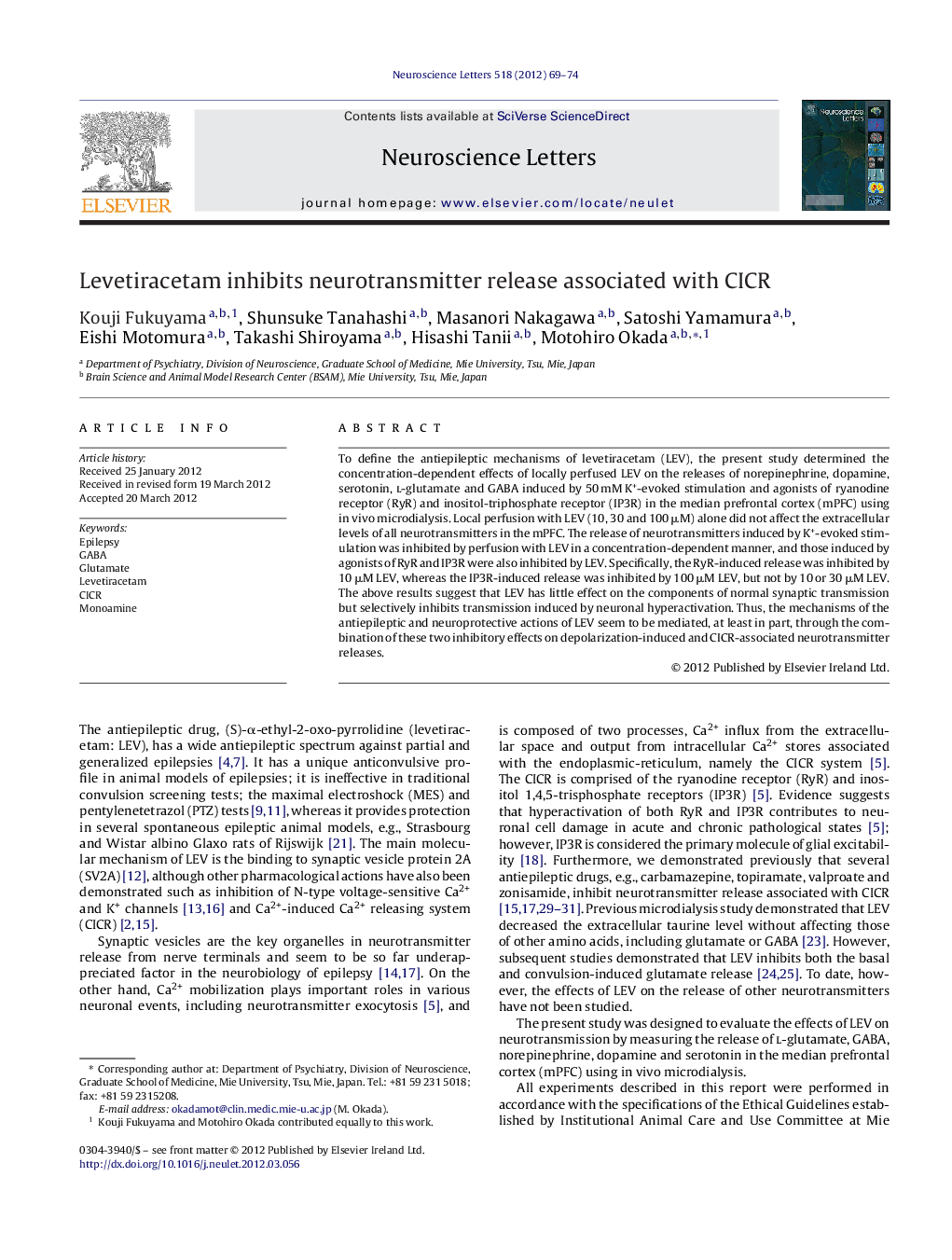| Article ID | Journal | Published Year | Pages | File Type |
|---|---|---|---|---|
| 4344495 | Neuroscience Letters | 2012 | 6 Pages |
To define the antiepileptic mechanisms of levetiracetam (LEV), the present study determined the concentration-dependent effects of locally perfused LEV on the releases of norepinephrine, dopamine, serotonin, l-glutamate and GABA induced by 50 mM K+-evoked stimulation and agonists of ryanodine receptor (RyR) and inositol-triphosphate receptor (IP3R) in the median prefrontal cortex (mPFC) using in vivo microdialysis. Local perfusion with LEV (10, 30 and 100 μM) alone did not affect the extracellular levels of all neurotransmitters in the mPFC. The release of neurotransmitters induced by K+-evoked stimulation was inhibited by perfusion with LEV in a concentration-dependent manner, and those induced by agonists of RyR and IP3R were also inhibited by LEV. Specifically, the RyR-induced release was inhibited by 10 μM LEV, whereas the IP3R-induced release was inhibited by 100 μM LEV, but not by 10 or 30 μM LEV. The above results suggest that LEV has little effect on the components of normal synaptic transmission but selectively inhibits transmission induced by neuronal hyperactivation. Thus, the mechanisms of the antiepileptic and neuroprotective actions of LEV seem to be mediated, at least in part, through the combination of these two inhibitory effects on depolarization-induced and CICR-associated neurotransmitter releases.
► Levetiracetam did not affect basal releases of monoamine, GABA and glutamate. ► Levetiracetam inhibited K+-evoked releases of monoamine, GABA and glutamate. ► Levetiracetam inhibited CICR-induced releases of monoamine, GABA and glutamate.
